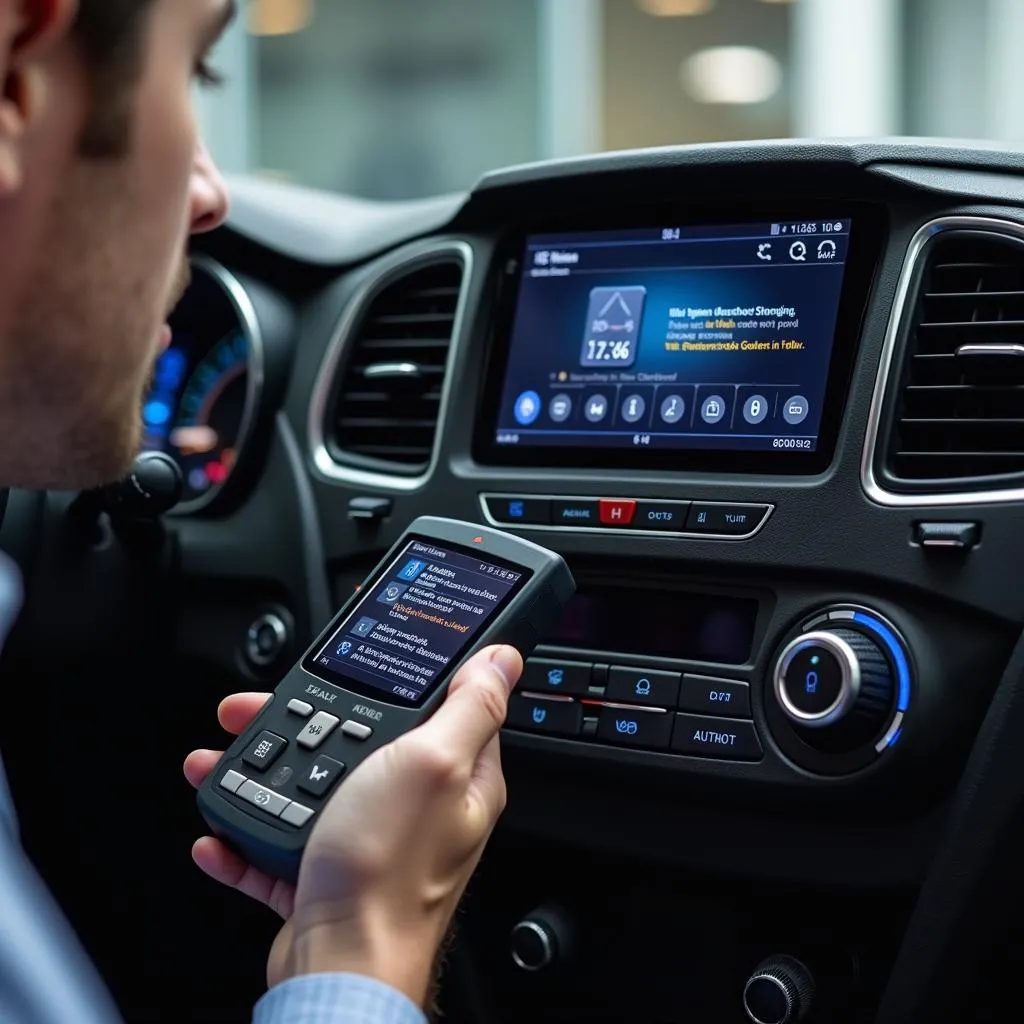The brake warning light on your dashboard is designed to grab your attention. For good reason, it means a system critical to your safety needs attention. Seeing that light illuminating in your Chevy Cavalier can be unsettling, but don’t panic! This article will guide you through common reasons behind a Chevy Cavalier brake warning light and offer potential solutions to get you back on the road safely.
Common Causes of a Chevy Cavalier Brake Warning Light
Several culprits could be triggering the brake warning light in your Chevy Cavalier. Let’s break down some of the most common issues:
- Low Brake Fluid: This is often the primary suspect. Brake fluid is the lifeblood of your braking system, transmitting the force from your foot to the brakes. A leak or simply low fluid level can trigger the warning light.
- Worn Brake Pads: Brake pads are designed to wear down over time. If they’re getting thin, the brake warning light might illuminate to alert you it’s time for a replacement.
- Faulty Brake Light Switch: This switch activates your brake lights when you press the pedal. If it malfunctions, it can also trigger the brake warning light.
- ABS Issue: If your Chevy Cavalier is equipped with an Anti-lock Braking System (ABS), a problem with this system can also trigger the warning light. This could be due to a faulty sensor or an issue with the ABS control module.
- Parking Brake Engaged: While seemingly obvious, sometimes the simplest explanation is the correct one. If your parking brake is even slightly engaged, it can trigger the warning light.
Troubleshooting Your Chevy Cavalier Brake Warning Light
Here’s a step-by-step approach to diagnose the problem:
- Check Your Parking Brake: Make sure the parking brake is fully disengaged.
- Inspect Brake Fluid Level: Locate the brake fluid reservoir under the hood. It’s usually a translucent plastic container. The “Min” and “Max” lines indicate the acceptable fluid range.
- Add Brake Fluid (If Necessary): If the fluid level is low, carefully add the correct type of brake fluid until it reaches the “Max” line.
- Inspect for Leaks: Look around the brake lines, calipers, and the master cylinder for any signs of fluid leaks.
- Check Brake Pads: If you feel comfortable, examine the brake pads through the wheel spokes. They should be at least 1/4 inch thick.
When to Seek Professional Help
If you’re not comfortable performing these checks or if the problem persists after addressing the basics, it’s crucial to consult a qualified mechanic. Brake issues are not to be taken lightly.
“Addressing brake issues promptly is non-negotiable,” says master mechanic John Davis. “Ignoring a brake warning light can lead to much more costly repairs down the line and, more importantly, compromise your safety on the road.”
Preventing Future Brake Warning Light Issues
A little preventative maintenance goes a long way in keeping your Chevy Cavalier’s braking system in top shape:
- Regular Brake Fluid Flushes: Brake fluid absorbs moisture over time, which can reduce its effectiveness. Aim to flush your brake fluid every 2 years or as recommended by your owner’s manual.
- Timely Brake Pad Replacements: Don’t wait for the brake warning light to tell you your pads are gone. Replace them preemptively to avoid damage to the rotors.
- Listen for Unusual Noises: Squealing or grinding sounds coming from your brakes are a sign of trouble. Get them checked immediately.
Conclusion
A glowing brake warning light in your Chevy Cavalier shouldn’t be ignored. While it may be a simple fix like low brake fluid, it could also signal a more serious issue. By understanding the common causes and taking a proactive approach to maintenance, you can ensure your Chevy Cavalier’s braking system remains reliable and keeps you safe on the road.
FAQs
1. Can I drive my Chevy Cavalier with the brake warning light on?
It’s strongly advised against driving with the brake warning light on. It signifies a potential issue with your braking system that could compromise your safety.
2. How much does it cost to fix a Chevy Cavalier brake warning light issue?
The cost can range widely depending on the underlying problem, from a simple brake fluid top-up to a more expensive brake pad or rotor replacement.
3. How often should I get my brakes checked?
It’s recommended to have your brakes inspected at least once a year or every 12,000 miles, even if you don’t notice any issues.
4. What type of brake fluid does my Chevy Cavalier use?
Refer to your owner’s manual for the specific type of brake fluid recommended for your model year. Using the incorrect fluid can damage your braking system.
5. Can I replace my Chevy Cavalier brake pads myself?
brake warning on chevy cavalier 2001 but brakes acting fine
While it’s possible, replacing brake pads is best left to qualified mechanics, especially if you’re not familiar with the process. Incorrect installation can affect braking performance and safety.

